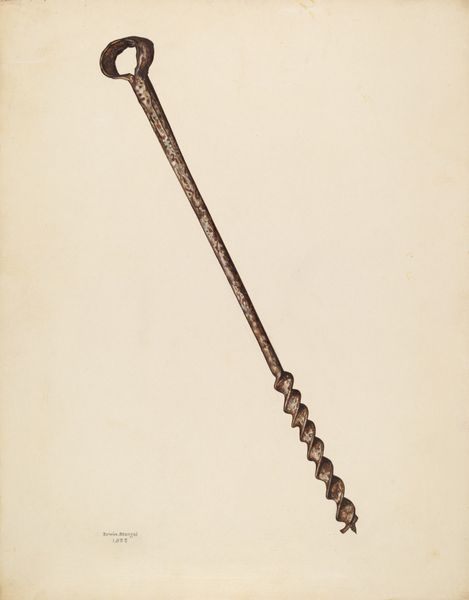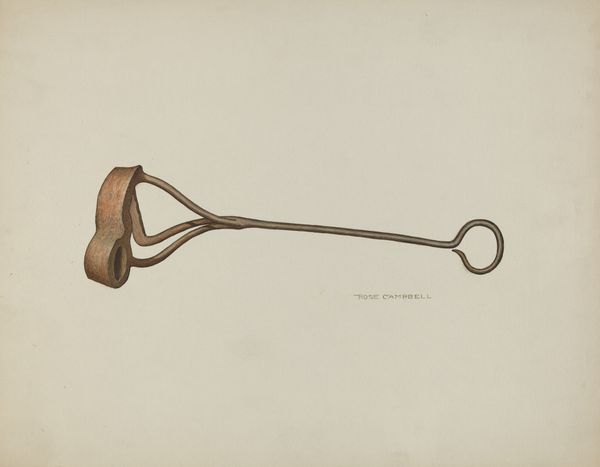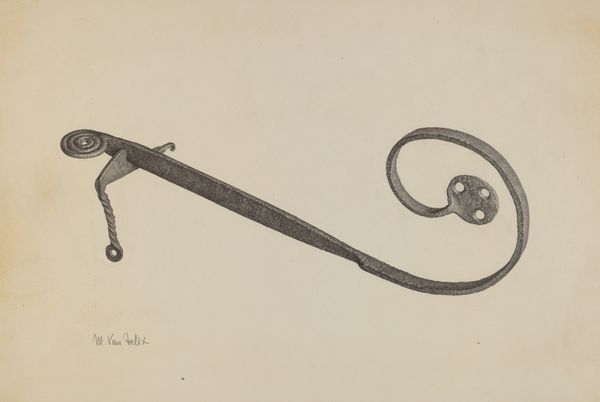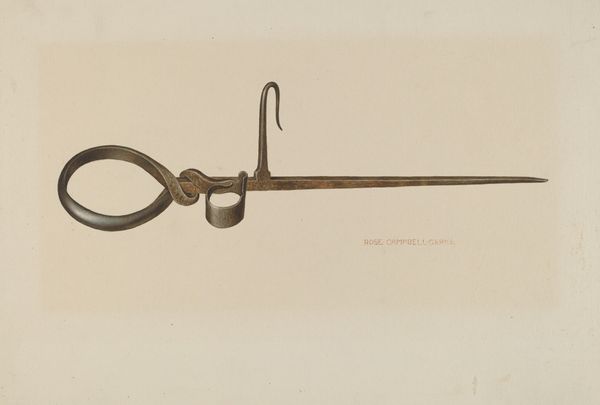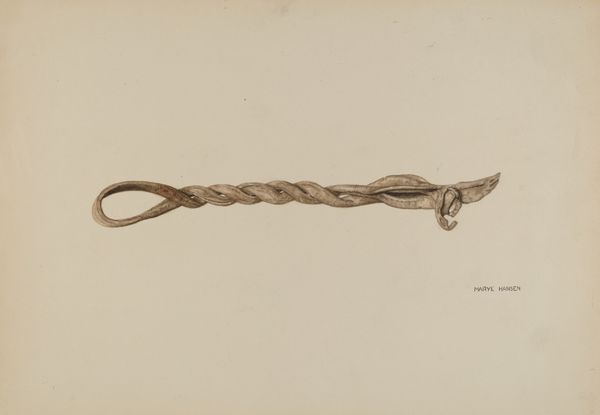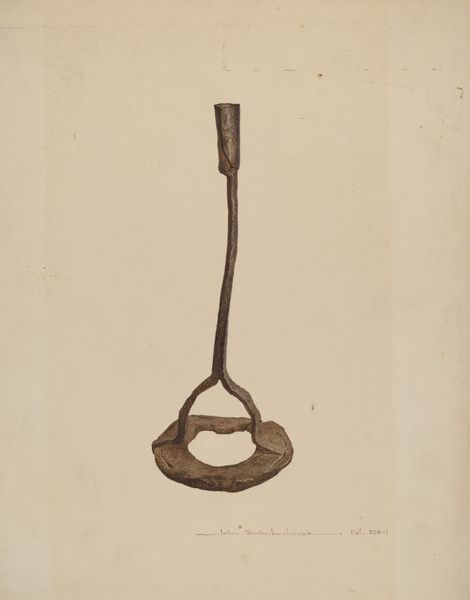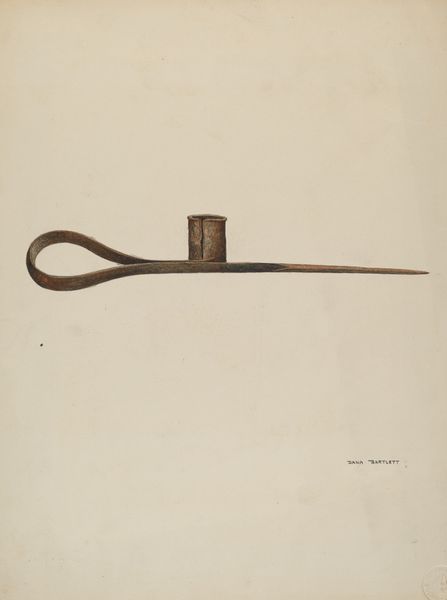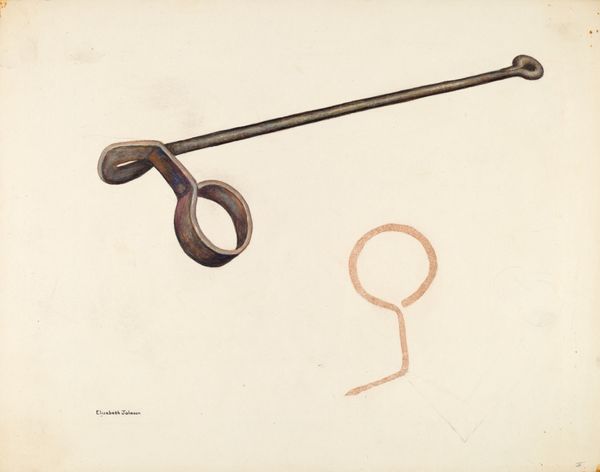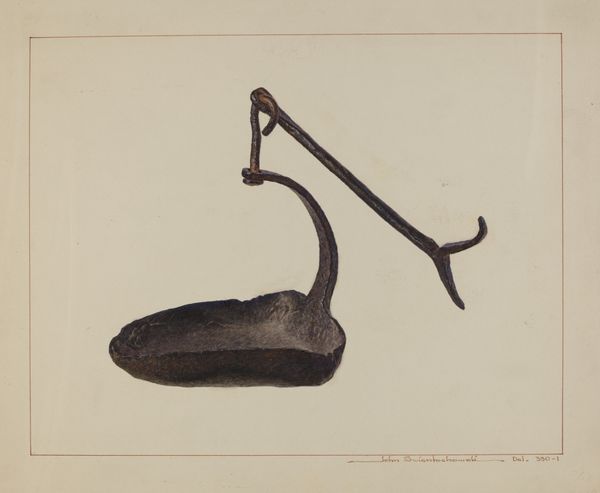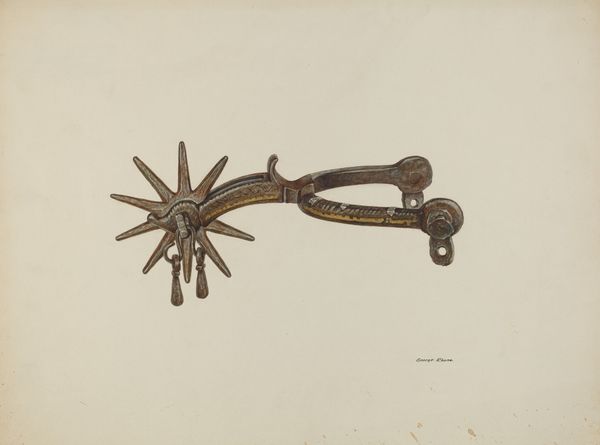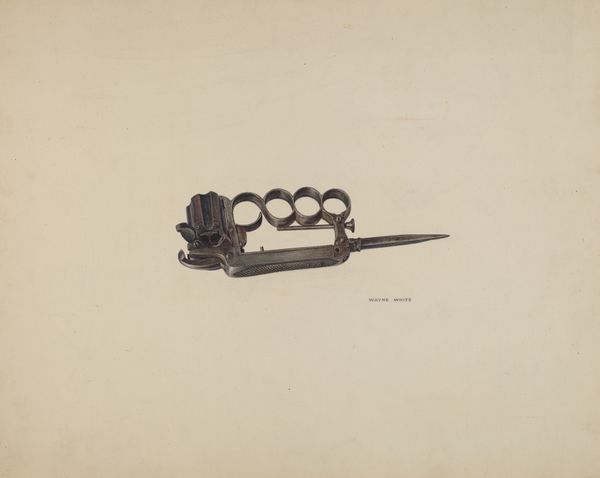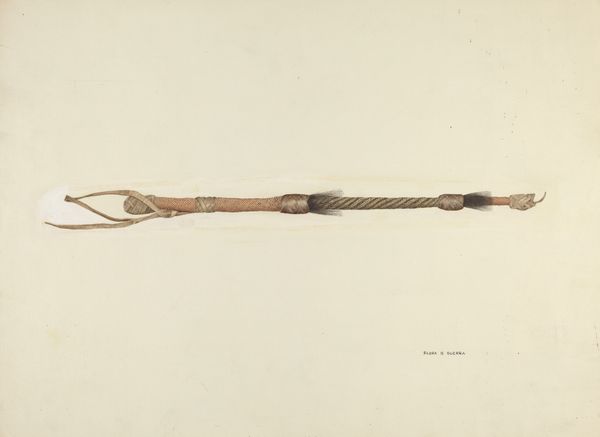
drawing, watercolor, pencil
#
drawing
#
watercolor
#
pencil drawing
#
pencil
#
watercolour illustration
#
watercolor
#
realism
Dimensions: overall: 24.6 x 35 cm (9 11/16 x 13 3/4 in.)
Copyright: National Gallery of Art: CC0 1.0
Curator: Welcome. Before us is John Swientochowski’s work, titled simply, "Fork." The piece, rendered in pencil and watercolor, dates between 1935 and 1942. Editor: The delicacy of the watercolour makes an interesting contrast to the harsh lines and tarnished look of the utensil. It has a strange quality…a forgotten artifact perhaps. Curator: Exactly! Think about the function of this object. It's a tool, meant for the mundane act of eating. Yet, it's been elevated through representation, inviting consideration of labor and domesticity – the unpaid work that often goes unseen. Editor: Yes, and Swientochowski’s choice of materials—pencil and watercolour—suggests a tension between mass production and the artist’s hand. It's a humble medium for a humble object. Was this from the WPA perhaps, an aesthetic capturing everyday objects for public record? Curator: That’s perceptive. Though information about the artist is scarce, placing it within the context of the 1930s, amidst the Great Depression and programs like the WPA, highlights how art can act as social documentation and also elevate the overlooked lives of ordinary people through everyday objects. Editor: There’s something almost archaeological about the rendering, how light and shadow are deployed to convey the age of this tool. It’s not idealized; you can imagine this fork having a story. Curator: And I believe it is this inherent narrative embedded in the commonplace which lends such pieces great cultural weight. This singular fork symbolizes more than just eating. What narratives does that evoke in our present era, with its shifting labor paradigms and renewed appreciation for craft? Editor: Food for thought. I’ve become captivated by what an austere medium like watercolour reveals here: it’s more than just a drawing; it’s a chronicle of material life. Curator: A lens through which we understand not just the artwork, but also ourselves and our own fraught connections to history.
Comments
No comments
Be the first to comment and join the conversation on the ultimate creative platform.


